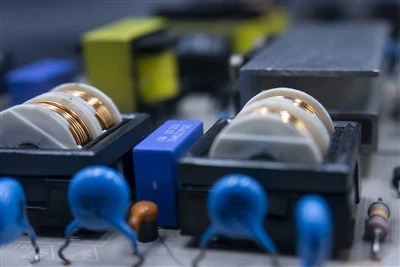
Understanding Relay Switches: The Key to Efficient Electrical Control
In the world of electrical engineering and control systems, relay switches play a vital role in managing circuits and automating processes. Whether it’s turning on a light, operating a motor, or triggering complex industrial operations.Relay switch are essential for seamless electrical control. Their versatility, reliability, and ability to operate in various environments make them indispensable across many industries. In this article, we will explore what relay switches are, how they work, their types, and applications, and why they are crucial to efficient electrical control.
1. What Are Relay Switches?
A relay switch is an electrically operated device used to control a circuit by opening and closing contacts. These switches are typically used to control high-power circuits with low-power signals, providing a safe and effective means of managing electrical devices. Essentially, relays act as intermediaries between two circuits: one controls the relay, while the other is activated or deactivated by the relay itself. This allows for precise control over various devices, from simple home appliances to complex industrial machinery.
2. How Relay Switches Work
The operation of a relay switch is simple yet ingenious. When an electrical current flows through a coil in the relay, it generates a magnetic field that attracts or repels a metal armature. This movement either opens or closes the contacts of the relay, depending on its design. By doing so, the relay can either complete or break the circuit, allowing or preventing electrical current from flowing to the controlled device. This indirect control ensures that high-powered devices can be safely managed using lower-voltage control signals, protecting sensitive circuits from potential damage.
3. Types of Relay Switches
There are several types of relay switches, each designed for specific applications. The most common types include:
- Electromagnetic Relays: These are the most basic types, using an electromagnet to operate the switching mechanism. They are widely used in various applications, including automotive systems and household appliances.
- Solid-State Relays (SSR): Unlike electromagnetic relays, solid-state relays have no moving parts. They use semiconductor devices to control the current flow, offering faster response times and greater reliability in harsh environments.
- Time-Delay Relays: These relays introduce a delay between the activation and operation of the relay. They are ideal for applications requiring timed control, such as lighting systems and industrial automation.
- Thermal Relays: Used primarily in motor protection, thermal relays monitor the heat generated by the current and activate or deactivate the circuit if overheating occurs.
4. Applications of Relay Switches
Relay switches have a wide range of applications across various industries. In the automotive sector, they control components such as headlights, wipers, and engine ignition systems. In industrial automation, relays play a critical role in controlling motors, pumps, and conveyor systems. Home appliances such as refrigerators, air conditioners, and washing machines also rely on relay switches to manage power and control functions. Moreover, in telecommunications and data centers, relays are used in server management and signal routing to ensure efficient and uninterrupted operations.
5. Importance of Relay Switches in Electrical Control
Relay switches are essential for maintaining efficiency and safety in electrical control systems. By allowing low-power control signals to manage high-power devices, relays reduce the risk of electrical faults, short circuits, and equipment damage. This makes them indispensable for protecting both the operators and the equipment. Additionally, relay switches offer precise control, enabling automated systems to function without human intervention. This automation not only improves efficiency but also reduces the chances of human error in critical applications.
6. Relay Switches in Modern Automation
With the advancement of technology, relay switches have become more sophisticated, especially in the field of automation. Modern relay switches are often integrated with programmable logic controllers (PLCs) and other smart systems, allowing for more complex control processes. For example, in smart homes, relay switches are used to control lighting, heating, and security systems based on user preferences and sensor inputs. In industrial automation, relay switches enable the coordination of complex tasks such as manufacturing processes, packaging, and distribution, significantly enhancing operational efficiency.
7. Solid-State Relays vs. Electromagnetic Relays
When choosing between solid-state relays and electromagnetic relays, it’s important to consider the application. Solid-state relays offer several advantages over their electromagnetic counterparts. They have faster switching speeds, longer lifespans, and are more resistant to vibration and shock. However, they can be more expensive and may generate more heat during operation. Electromagnetic relays, on the other hand, are more affordable and can handle higher current loads, making them suitable for heavy-duty applications. The choice between the two depends on the specific requirements of the electrical control system.
8. Key Considerations When Choosing a Relay Switch
Selecting the right relay switch for your application requires careful consideration of several factors. The voltage and current ratings of the relay must match the specifications of the circuit being controlled to avoid overloading or underperformance. The operating environment is also critical, as relays used in harsh conditions must be resistant to factors such as moisture, dust, and extreme temperatures. Additionally, the response time, switching capacity, and expected lifespan of the relay should be considered to ensure reliable and efficient performance. In complex systems, the compatibility of the relay with other components, such as PLCs and sensors, is another important factor.
9. The Future of Relay Switches in Electrical Control
As industries continue to embrace automation and smart technology, relay switches will play an increasingly important role in the future of electrical control. Innovations such as miniaturization, wireless control, and integration with artificial intelligence (AI) are already shaping the next generation of power relay. These advancements will enable even greater precision, reliability, and energy efficiency in controlling electrical systems. As the demand for automation grows, relay switches will continue to evolve, offering new possibilities for enhancing the safety, performance, and efficiency of electrical control systems in both industrial and domestic settings.
In conclusion
relay switches are fundamental to the efficient operation of electrical systems. Their ability to safely and precisely control circuits makes them indispensable in numerous applications, from everyday household appliances to complex industrial machinery. Understanding how relay switches work, their types, and their applications is key to making informed decisions in designing and maintaining efficient electrical control systems. As technology advances, relay switches will remain at the forefront of innovations in automation and electrical engineering, ensuring the continued growth and development of smart and efficient electrical control solutions.



